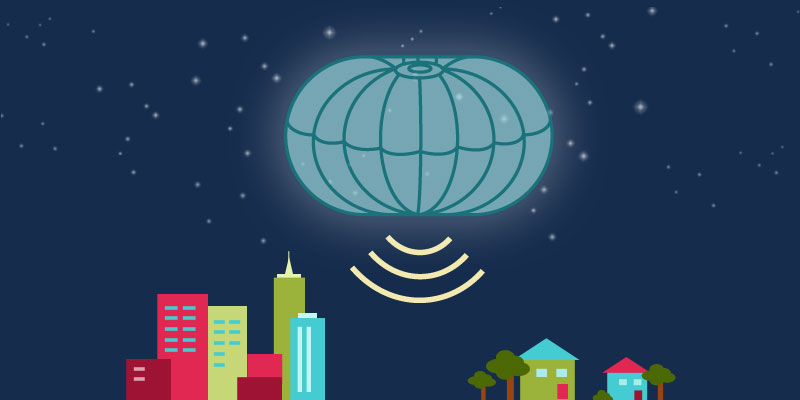If you thought helium balloons were just for fun, you’re wrong. Well at least according to Google. In 2013, the tech-company started a project named ‘Project Loon’, simply translated as ‘a crazy project’. Helium balloons, equipped with Wi-Fi-technology, should provide internet access to distant and often rural areas that momentarily don’t have access to the world wide web.
These enormous balloons, which have a diameter of approximately 15 meter, operate in the stratosphere at altitudes between 18 km and 25 km. These altitudes are especially suitable because there are relatively low wind speeds and there is little turbulence. The height of the balloons can be adjusted by using advanced software algorithms. By adjusting and optimizing the altitude, Google believes it can roughly keep the balloons at the same location in the air. This allows a fleet of balloons to be coordinated in such a way to guarantee there is always one balloon flying over a specific region. The balloons are equipped with batteries – that run on solar energy – which provides the necessary equipment in the balloons with electricity.
Applications
The balloons can be used to deliver access to parts of the world that are currently badly connected to the internet. In some remote areas it isn’t cost effective to provide internet access by traditional underground fiber cables. Another application is the use of these balloons in the case of an emergency, like natural disasters. Balloons can be send to affected regions to improve communication between e.g. survivors and emergency services.
Challenges
There are however still some challenges to face. The sturdiness of the balloons is yet not optimal, which means that they have a limited time to fly. Naturally, the longer the balloons stay up, the lower the operating costs. Nowadays, the maximum ‘up-time’ is just about 130 days. The safety part have to be addressed as well. Since 2014, around 10 balloons have crashed or landed at buildings. Moreover, when it comes to full implementation in the future, coordination and communication with other flying objects have to be improved too.
Altogether, Project Loon has some great opportunities that can lead to improved internet access for the world’s poorest regions and people. Do you believe in this project?
Sources:
– Simonite, T. (2015) ’10 Breakthrough Technologies 2015: Project Loon’ MIT Technology Review, 2015

